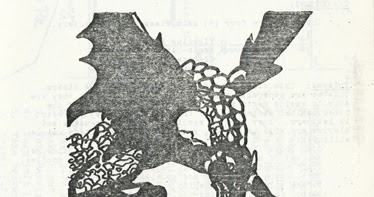Don't forget that Gygax cites the Thief influences as being Zelazny's Shadowjack (i.e. Jack of Shadows) and Vance's Cugel.
THIEF
The Thief first shows up in the Great Plains Game Players Newsletter #9, and then in OD&D (Greyhawk)
Origin: This is the fine line between borrowing and theft? There is no line for this class. Gygax stole the concept from someone else. The original thief had the skills you would expect from a box-man who would deal with traps and safes (but not sneaking, climbing, etc.) and probably used a modified "spell system" like a MU. Gygax switched the system to a percentile system and added some details based on Vance and Zelazny.
Controversy: This may be the mother of all controversies! Gygax always steadfastly maintained sole credit for this class, but exceptionally credible evidence exists that Gary Switzer & Aero Games made the Thief class, and while Gygax added some stuff to it and changed some stuff, it's largely someone else's invention.


